
For many pet parents, leaving their dog home alone can be a cause for concern. It’s important to recognize that every dog is different when it comes to being alone, based on factors like age, physical and emotional needs, and temperament. By preparing and managing properly, you can help your furry companion feel more at ease when left on their own. While most dogs can handle being alone for eight to ten hours, it’s wise to assess your dog’s specific requirements. The key to ensuring a successful time alone for your dog is to gradually teach them, ensuring they feel safe and confident in their surroundings. Providing mental stimulation, creating routines, and ensuring your dog’s safety when they’re by themselves are vital aspects to consider. As a dog parent, it’s your duty to understand and cater to your dog’s needs while also ensuring their well-being when they’re alone. By taking the time to acclimate your dog to being home alone, you can strike a balance between your own needs and those of your pet. With patience and consistency, your dog can learn to enjoy their alone time, making your departures worry-free and guilt-free for both of you.
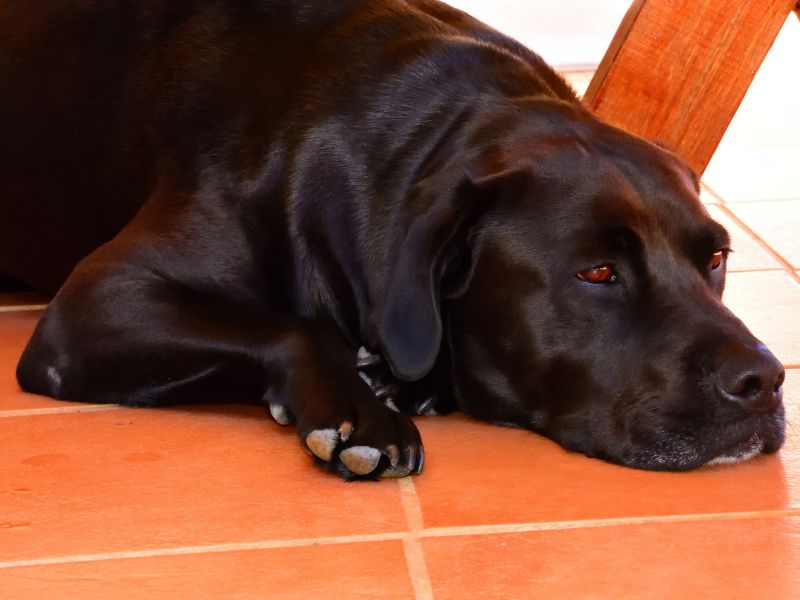
Leaving your dog home alone while you’re at work can pose a dilemma for both you and your furry friend. Dogs may feel anxious and stressed when left alone, while owners may feel guilty about leaving them behind. However, with the right approach, it’s possible to ensure that your pets are safe, secure, and happy while you’re away. It’s important to determine how long your dog can be left alone without causing harm or distress. This depends on factors such as age, breed, health, and personality. Puppies have different needs than adult dogs, and their bladder control is limited. The American Kennel Club recommends that puppies up to 10 weeks old can hold their bladder for only 1 hour, while those between 10-12 weeks old can hold it for 2 hours, and 3-month-old puppies for up to an hour per month of age. Adult dogs should generally not be left alone for more than 6-8 hours a day. Here are some tips for getting your dog ready for alone time at home: Establish a routine: Create a consistent schedule for your dog’s activities like feeding, exercise, and bathroom breaks. Dogs thrive on routine and knowing what to expect can help them feel more comfortable when you’re not around. Provide mental stimulation: To keep your dog from getting bored or anxious, give them toys or puzzles to keep their mind engaged while you’re away. Create a safe space: Set up a cozy spot for your dog to relax in while you’re gone, whether it’s a designated area in the living room or a comfortable crate. Ensure the space is free of hazards and has access to water. Consider hiring a pet sitter or walker: If your dog needs extra attention during the day, consider hiring a professional pet sitter or dog walker to check in on them. This can be particularly helpful for puppies or dogs with separation anxiety. Ultimately, it’s crucial to pay attention to your dog’s individual needs, invest time in training, and be aware of any signs of stress or anxiety. By following these tips, you can help your dog adjust to time alone at home while you’re at work and maintain a strong bond with your furry companion. After all, dogs are social creatures who thrive on love and companionship.
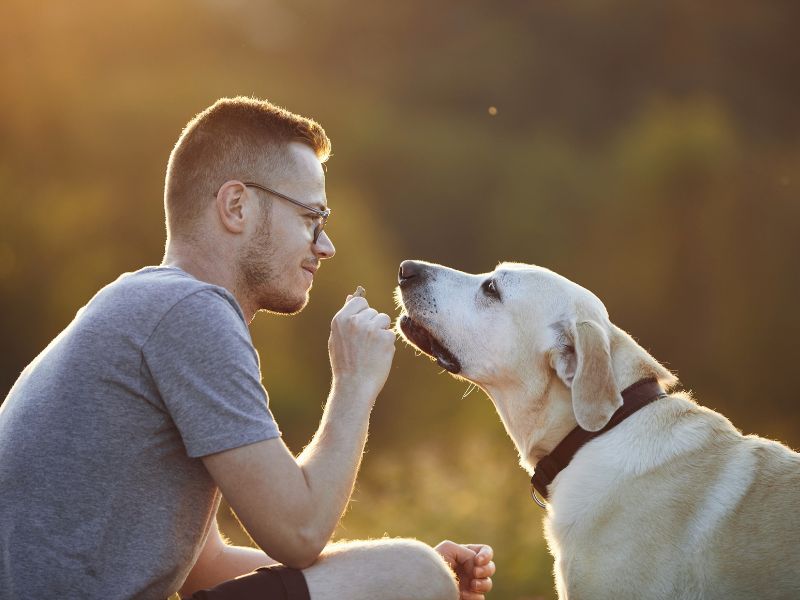
Dogs are known for their social nature, forming strong bonds with humans. Like people, dogs enjoy social interactions and spending time with their human family members. It is important to consider this when leaving them alone, as prolonged isolation can lead to stress and anxiety. Many dog owners may wonder how their pets cope with being home alone and if it affects their well-being. Companion dogs thrive on social closeness with humans, and lack of this interaction can cause stress. Studies show that cortisol levels in dogs increase when they are left alone for extended periods. However, it is crucial to teach dogs how to self-soothe and cope with being alone to prevent separation anxiety and build their confidence. Providing interactive toys or puzzle feeders can help keep them engaged while you are away, creating a positive environment for both you and your dog. Supporting your dog’s social nature is vital for their happiness and well-being. Understanding their need for social interactions and taking steps to improve their alone time can make a significant difference in their quality of life. By finding a balance between social interactions, exercise, and moments of being alone, you can ensure that your dog leads a fulfilling and comfortable life.
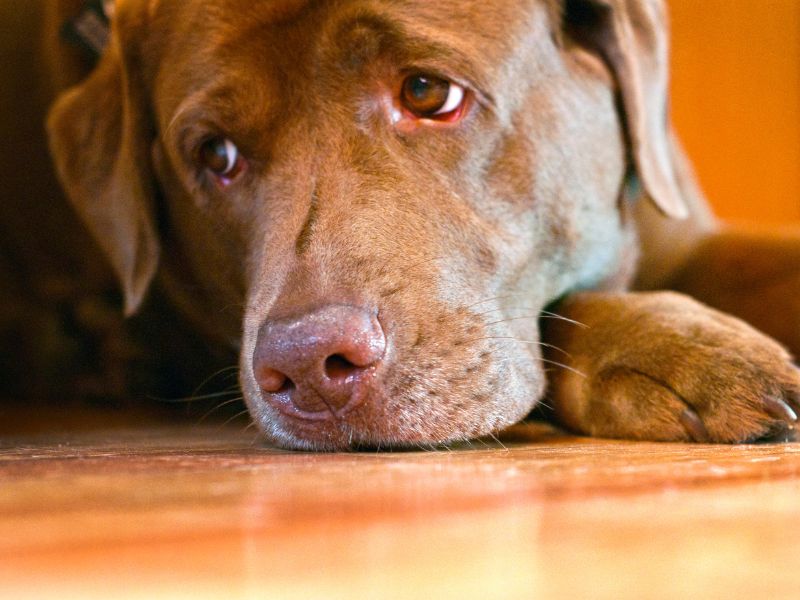
Dogs are social creatures who enjoy being around humans or other animals. However, it’s important to remember that each dog is unique with its own personality, temperament, and requirements. Some dogs are fine being alone at home for a while, while others may struggle with separation anxiety or stress. To help your dog adjust to being home alone, start by gradually introducing short periods of time and gradually increasing it. This gradual process will help your dog feel more secure and relaxed when you’re not there. Providing toys, puzzles, and soothing music can also help keep them occupied and reduce their stress levels. Different dog breeds have varying levels of independence, which can affect how they handle being alone. For example, breeds like Greyhounds and Shiba Inus are known to be more independent and may cope better with solitude. Understanding your dog’s breed and tendencies is crucial before leaving them alone for long periods. Even independent dogs still need social interaction and stimulation, so be sure to give them plenty of exercise, mental stimulation, and quality time when you’re home. Regular exercise and attention will contribute to a happier and healthier dog overall. While dogs may not be thrilled about being home alone, there are ways to help alleviate their stress. By taking into account your dog’s breed, temperament, and individual needs, you can create a comfortable environment for them even when you’re not around. Remember, a little love and attention go a long way in keeping your furry friend content.
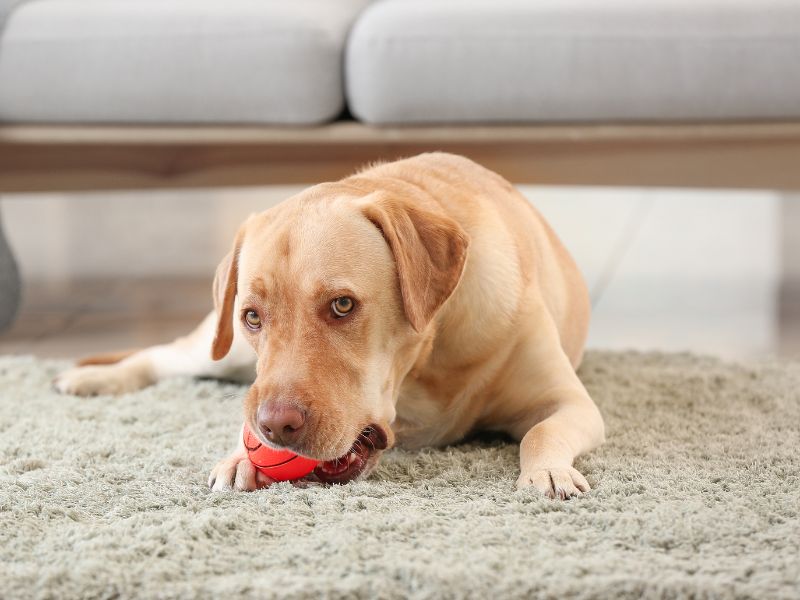
Pet owners who work full-time often struggle with leaving their beloved dogs at home alone. To ensure their furry pals are safe and content while they’re away, they employ various tactics. Here are some helpful tips from seasoned pet owners. First and foremost, it’s crucial to provide a secure and comfortable environment for your dog. Using a dog crate can help prevent destructive behavior and offer a safe haven for your pet while you’re out. According to PetMD, crates are especially beneficial for dogs who like to explore every nook and cranny of the house. To help your dog feel more relaxed, create a designated play area stocked with toys and activities. Rotating toys can keep them entertained and engaged throughout the day. Puzzle toys and interactive feeders are excellent choices for mental stimulation. Additionally, pet parents should dog-proof their homes by securing trash cans, storing dangerous substances like cleaning agents and medications out of reach, and removing potential chewing hazards. Covering electrical outlets and getting rid of small, chewable items such as shoes or art supplies is also crucial. Establishing a routine is key to your dog’s well-being. Regular walks or play sessions before and after work can help your pet understand your absence and anticipate your return. A consistent schedule can alleviate separation anxiety and keep your dog calm while you’re away. For severe cases of separation anxiety, consider options like doggy daycare, hiring a pet sitter, or asking a neighbor or friend to check in on your dog during the day. These alternatives can provide additional comfort, socialization, and relief for your furry companion. In conclusion, it’s important to remember that every dog is unique. Assess your pet’s individual needs and develop a plan that caters to those requirements while ensuring their safety and happiness when left alone at home. By addressing these challenges, you can make the experience more enjoyable for both you and your cherished canine companion.
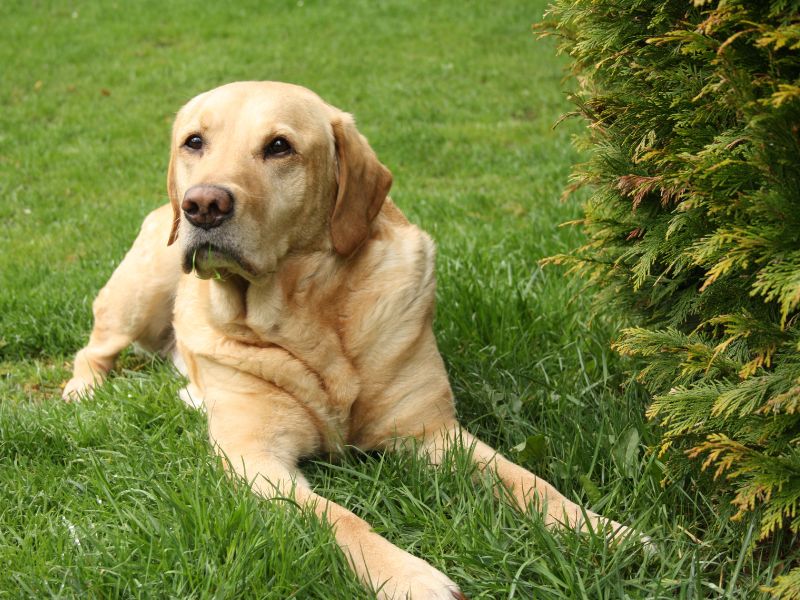
Learn from the expertise of Pippa Mattinson, a seasoned dog trainer who generously shares her knowledge through free online resources. Her tips cover a wide array of topics, ranging from specific training exercises like heel work and recall to general advice on capturing your dog’s attention, avoiding common pitfalls, and staying motivated throughout the training process. One crucial aspect that Pippa focuses on is teaching dogs to be comfortable staying home alone. This skill is essential for ensuring your four-legged friend feels secure and at ease when you’re not around, whether you’re just out running errands or heading off to work for the day. Pippa’s training method aims to set both you and your dog up for success. To start, Pippa suggests beginning with basic obedience drills, such as teaching your dog to go to their bed and stay there for a short period while you’re present. Be sure to reward your pup for staying quietly in their designated spot, as this helps to build trust and promote a sense of calm, even when you’re not there. As your dog gets the hang of this initial exercise, Pippa advises gradually working on separation. Start by encouraging your dog to stay in their bed as you move away, then return to reward them for staying put. This gradual approach makes it easier for your furry companion to learn how to manage being alone. Pippa’s wealth of dog training tips is easily accessible to anyone, drawing on her four decades of hands-on experience. Her practical guidance and easy-to-follow instructions make it a breeze to incorporate training into your daily routine. Give Pippa’s strategies a try and help your dog feel more confident and at ease when you’re away from home.
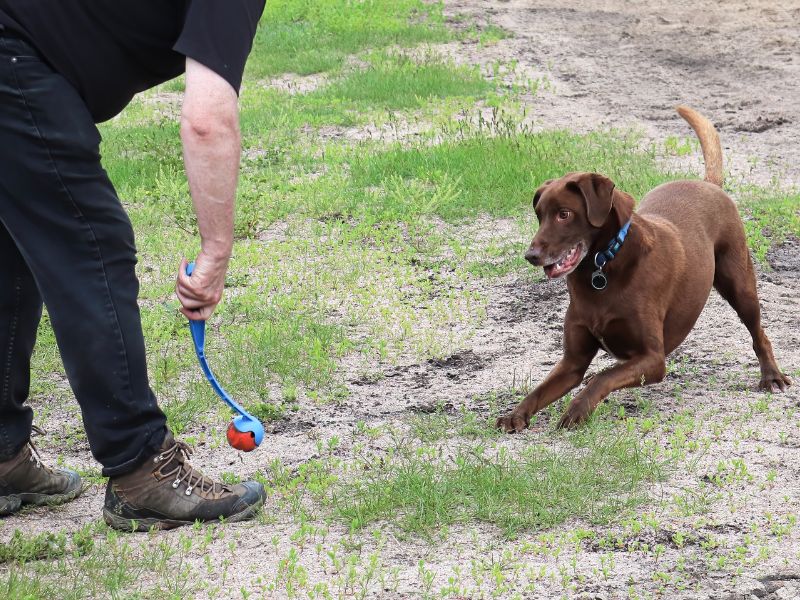
Ensuring your dog’s well-being is crucial, especially when you’re away from home. To help keep your furry friend mentally and physically healthy, consider breaking up their day with various activities. One tip is to take your dog for a 20-30 minute walk or play session before leaving them alone, as tiring them out can make their alone time more relaxing. If you’ll be gone for an extended period, think about getting a dog walker or pet sitter to give your dog some company and exercise throughout the day. It’s important to find someone you trust, so asking for recommendations is a good idea. Another way to keep your dog entertained while you’re away is by providing interactive toys and puzzles. These can stimulate your pet’s mind and prevent boredom, which could lead to destructive behavior or anxiety. Upon returning home, pay attention to any changes in your dog’s behavior, such as lethargy or disinterest in activities they once enjoyed. These could be signs that your dog is struggling with being alone for too long. If you notice any concerning symptoms, consult your vet to rule out any medical issues and consider adjusting your dog’s routine to help alleviate their stress. By incorporating exercise, social interaction, and mental stimulation into your dog’s day, you can ensure they have a happier and healthier experience while home alone. Remember, every dog is different, so it’s essential to tailor their routine to their individual needs.
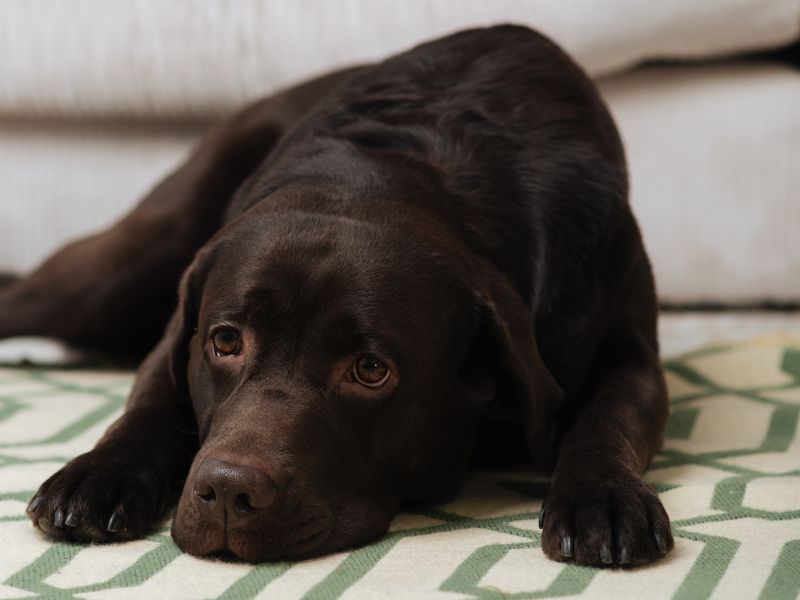
Is it okay to leave your dog alone at home? It can be necessary at times, but it’s important to know how long is appropriate for your pet’s well-being. The duration a dog can be left alone depends on various factors like age, physical health, and emotional needs. For young puppies, it’s typically recommended not to leave them alone for extended periods. At 10-12 weeks, they can only hold their bladder for around 2 hours. As they mature, they can gradually increase their bladder control, with adult dogs able to hold it for 6-8 hours. When it comes to adult dogs, they generally have better bladder control and can be left alone for about 8-10 hours. However, it’s vital to evaluate each dog individually, considering their breed, temperament, and any medical conditions they may have. It’s crucial to keep in mind that dogs, particularly puppies, need frequent bathroom breaks. Here’s a rough guide on how long you can leave your pup alone based on their age: – 4 months: 4 hours – 5 months: 5 hours – 6 months: 6 hours – Over 6 months: Maximum 6-8 hours Remember that these are just guidelines, and every dog is unique. Some dogs may require more attention or need more breaks. Always consider your pet’s specific needs and consult a vet if you have concerns about leaving them alone for long periods.

Is it okay to leave your furry friend home alone? This is a common worry for new pet parents. It’s crucial to keep in mind that each dog is different, and their ability to handle being by themselves depends on various factors like age, physical condition, and emotional needs. When thinking about leaving your pup home alone for the first time, make sure they are ready and have had enough time to get used to their new surroundings. Try not to do this in the first few days of bringing them home. A key consideration is your dog’s bladder control. Older dogs might be able to hold it in for longer periods, while younger ones may need more frequent potty breaks. To make your dog feel more comfortable during their alone time, consider these tips: – Create a cozy and safe spot for them with their bed, toys, and water. – Gradually increase the amount of time they spend alone, starting with short periods. – Give them mental and physical stimulation beforehand, like a walk or playtime. – Stick to a routine so your furry friend knows when to expect you back. While you may have commitments that require you to leave your dog at home, it’s important to find a balance between their need for companionship and your other responsibilities. Depending on your dog’s age, breed, and individual requirements, you might want to consider getting a friend to check on them, or even hiring a pet sitter or dog walker. In conclusion, leaving your dog home alone is possible as long as they are prepared, mentally and physically ready, and have a set routine for when you’re away.
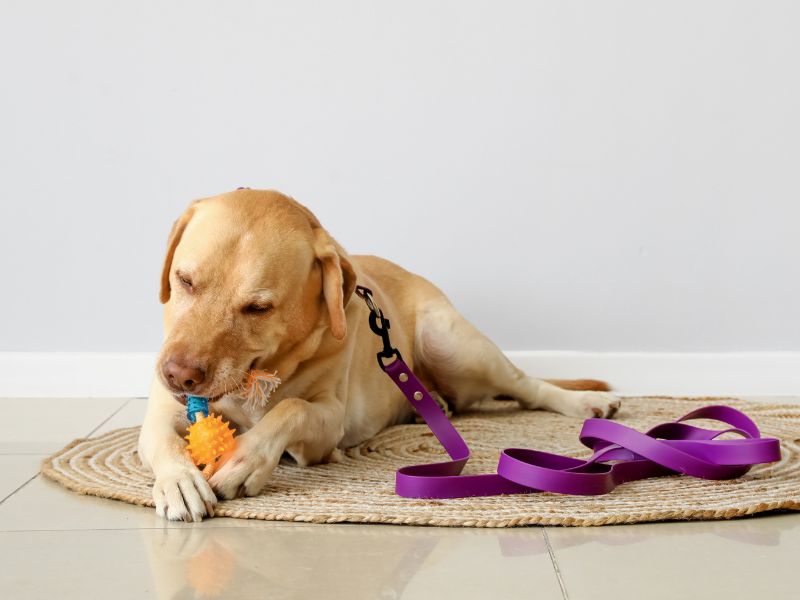
Deciding to leave your furry friend at home alone can be a tough choice for many pet parents. It’s just a part of life that requires the right planning and understanding. The length of time a dog can be left alone depends on their age, physical health, and emotional needs. Most grown-up dogs can handle being on their own for about eight to ten hours, depending on their individual personalities. Using a crate can help keep them secure and cozy while you’re away. Make sure they have a safe, comfortable crate and gradually increase the time they spend in it to help them feel more at ease. Puppies, on the other hand, need more attention and potty breaks. They can only be left alone for a shorter period, usually no more than six to eight hours. It’s important to teach them how to feel comfortable being by themselves and slowly increase their alone time. Before leaving your dog at home, be sure to take precautions to keep them safe. Put away any dangerous items like toxic plants, medications, or small objects they might swallow. Also, make sure they have access to fresh water and a cozy spot to cuddle up in. Even though it’s possible to leave your canine companion home alone, remember to always consider their well-being and ensure they’re comfortable and secure. Every dog is unique, so it’s essential to pay attention to their specific needs and adjust accordingly.


